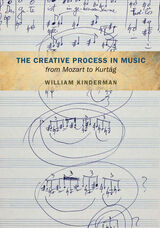
Great music arouses wonder: how did the composer create such an original work of art? What was the artist's inspiration, and how did that idea become a reality? Cultural products inevitably arise from a context, a submerged landscape that is often not easily accessible. To bring such things to light, studies of the creative process find their cutting edge by probing beyond the surface, opening new perspectives on the apparently familiar.

With all the drama and complexity of a symphony, Listening to Mozart traces forty years in the life of flutist James Baxter. Many of the stories in this collection—actually a novel in stories—center on or revolve around James' relationship with Anna, a potter and artist. Each story is a separate movement, yet they combine to create a deeply textured whole work. The stories chronicle James' inward journey, as well as his life and loves, with a voice repeatedly transformed through the years.
“Bach Suite” serves as a prologue and deals with the split in consciousness that often accompanies musical performance. The story imitates the musical form it describes and tunes the reader's ear to the innermost thoughts of a musician. Each succeeding story introduces another episode in James' life—his music school days in Philadelphia with his first love, Zoe, his stint in the U.S. Marine Band during the Vietnam War when he meets Anna, his adventures with his friend Franklin, his experiences with the mysterious Dalawa, a trip with Anna to Toronto to immerse themselves in the culture and music of South India. James' friendships, affairs, experiences, and occasional angst resound in each story.
In all the stories, in all his relationships, James finds himself experiencing his life in much the way he experiences music. There is a moment for which he is waiting, yet for which he is never fully prepared, a moment which passes inexorably. Sometimes, in the rare musical experience, he is able to penetrate that moment and allow time to fall away. These moments are the signposts of his life, like the movements of the Bach suite, but unbidden, and they give him his only perspective and vision.
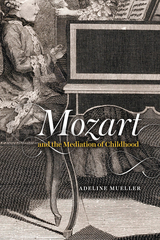
The story of Wolfgang Amadeus Mozart’s precocity is so familiar as to be taken for granted. In scholarship and popular culture, Mozart the Wunderkind is often seen as belonging to a category of childhood all by himself. But treating the young composer as an anomaly risks minimizing his impact. In this book, Adeline Mueller examines how Mozart shaped the social and cultural reevaluation of childhood during the Austrian Enlightenment. Whether in a juvenile sonata printed with his age on the title page, a concerto for a father and daughter, a lullaby, a musical dice game, or a mass for the consecration of an orphanage church, Mozart’s music and persona transformed attitudes toward children’s agency, intellectual capacity, relationships with family and friends, political and economic value, work, school, and leisure time.
Thousands of children across the Habsburg Monarchy were affected by the Salzburg prodigy and the idea he embodied: that childhood itself could be packaged, consumed, deployed, “performed”—in short, mediated—through music. This book builds upon a new understanding of the history of childhood as dynamic and reciprocal, rather than a mere projection or fantasy—as something mediated not just through texts, images, and objects but also through actions. Drawing on a range of evidence, from children’s periodicals to Habsburg court edicts and spurious Mozart prints, Mueller shows that while we need the history of childhood to help us understand Mozart, we also need Mozart to help us understand the history of childhood.
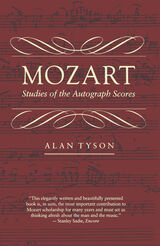
The results and implications of Alan Tyson’s work on Mozart have had a profound impact on virtually every aspect of research on this composer: biography, chronology of compositions, working methods, stylistic analysis. Central, perhaps, are Tyson’s discoveries on chronology: time and again he has proved that datings, often of large, well-known works, that have been accepted for generations are not only erroneous but based on little more than speculation. This book assembles his major articles, previously scattered through magazines, journals, and festschrifts, plus two unpublished pieces, into a treasure trove for musicologists and music lovers.
Tyson’s investigations, using primarily paper analysis, span Mozart’s entire career and the full range of genres—string quartets, operas, choral music, keyboard music, concertos, and symphonies. He goes into the genesis of major works such as Cosi fan tutte, the “Prague” Symphony, the Piano Sonata K.333, the “Haydn” quartets, and La clemenza di Tito. His conclusions about chronology bear directly on biographical questions and current accounts of Mozart’s stylistic development as well as his compositional methods. We learn here, for example, that the “first” horn concerto was in fact Mozart’s last, and that he did not even complete the second movement, which was finished after his death by his pupil Süssmayr. The writing (and, in some cases, rewriting) of his later operas such as Figaro and Cosi fan tutte also lends itself to investigation by the same techniques; this is resulting in the rediscovery of some lost measures and little-known variant versions of arias.
Tyson’s style is clear and elegant, and the originality of his work and the soundness of his inferences make this book a pleasure.
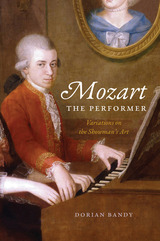
We know Mozart as one of history’s greatest composers. But his contemporaries revered him as a multi-instrumentalist, a dazzling improviser, and the foremost keyboard virtuoso of his time. When he composed, it was often with a single aim in mind: to set the stage, quite literally, for compelling and captivating performances. He wrote piano concertos not with an eye to posterity but to give himself a repertoire with which to flaunt his keyboard wizardry before an awestruck public. The same was true of his sonatas, string quartets, symphonies, and operas, all of which were painstakingly crafted to produce specific effects on those who played or heard them, amusing, stirring, and ravishing colleagues and consumers alike.
Mozart the Performer brings to life this elusive side of Mozart’s musicianship. Dorian Bandy traces the influence of showmanship on Mozart’s style, showing through detailed analysis and imaginative historical investigation how he conceived his works as a series of dramatic scripts. Mozart the Performer is a book for anyone who wishes to engage more deeply with Mozart’s artistry and legacy and understand why, centuries later, his music still captivates us.
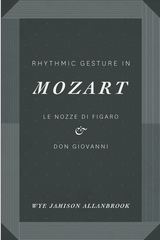

READERS
Browse our collection.
PUBLISHERS
See BiblioVault's publisher services.
STUDENT SERVICES
Files for college accessibility offices.
UChicago Accessibility Resources
home | accessibility | search | about | contact us
BiblioVault ® 2001 - 2024
The University of Chicago Press









